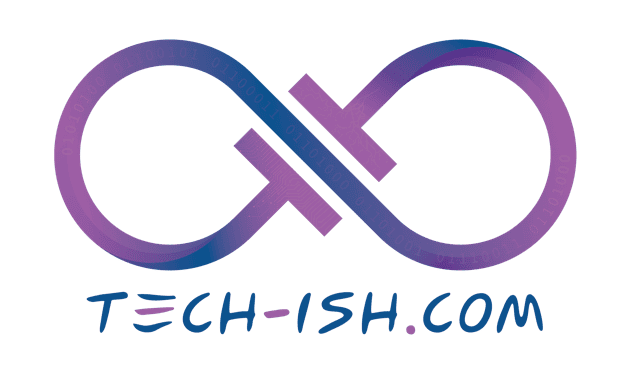
Insights At a Glance:
- Safaricom leads with 678K+ users; Jamii Telecom (Faiba) holds steady at #2 with 418K+ subscribers.
- Poa Internet saw the biggest jump among top ISPs, adding 23K+ users in three months.
- Starlink dropped 2K+ users but has resumed sign-ups in Nairobi, ready for a rebound.
Kenya’s fixed internet landscape just got a fresh shake-up, and the latest numbers from the Communications Authority of Kenya (CA) tell a story of familiar faces holding their ground—and rising challengers demanding attention.
The newest Sector Statistics Report, covering the period from January to March 2025, reveals that while giants like Safaricom and Jamii Telecom still dominate the scene, newer and more agile players are steadily building momentum. And yes, Starlink is still in the game.
Safaricom Still Reigns
At the top of the pack is none other than Safaricom, with 678,118 fixed internet subscriptions as of March 2025. That’s a steady jump from 621,149 recorded in December 2024 and gives them a dominant 36.5% market share.
No surprises here—Safaricom’s Fibre-to-the-Home and Fibre-to-the-Business services continue to expand, especially in urban areas where consistent connectivity is a must-have. With bundle options, mobile tie-ins, and a solid customer service record, they’ve become the go-to for the average household and small office.
Jamii Telecommunications: Holding Strong
Jamii Telecommunications Ltd (yes, the folks behind Faiba) remains Kenya’s fixed internet silver medalist, recording 418,309 subscribers—up from 405,646 in the previous quarter. That’s a 22.5% share of the market. Jamii’s appeal lies in its speed, competitive pricing, and loyal user base. While it may not have the marketing muscle of Safaricom, it continues to win over Kenyans who want reliable, high-speed internet—especially in Nairobi and major towns.
Battle for Bronze: Wananchi vs. Poa
Wananchi Group (Zuku) and Poa Internet are in a neck-and-neck fight for third place.
- Zuku clocks in at 267,812 users (14.4%), up slightly from 264,206.
- Poa Internet has 261,491 subscribers (14.1%), up from 238,030—a much steeper climb.
Poa’s rapid rise reflects its aggressive rollout in underserved low-income areas, positioning itself as the budget-friendly, community-first ISP, although CAK might spoil the party with the recent crackdown on estate ISP monopolies. Zuku, on the other hand, remains popular with families thanks to its cable+internet bundles, but its slower growth may suggest stiff competition from more nimble players. Or simply the switch to streaming devices like Chromecast with Google TV and others.
Starlink’s Kenyan Adventure: Comeback Mode?
After temporarily halting sign-ups for months, Starlink Internet Services Kenya has resumed operations in Nairobi—and the timing couldn’t be better. Despite a slight dip in subscribers from 19,146 in December 2024 to 17,066 in March 2025, Starlink remains one of the top 10 ISPs in the country.
Given that Starlink is a premium service with satellite-based infrastructure, its market share (0.9%) might seem small—but its presence is mighty. In areas where terrestrial fibre fears to tread (think remote towns, off-grid farms, or roadtrip stops in the middle of nowhere), Starlink offers a lifeline.
If they push hard with marketing, lower initial setup costs, better pricing bundles, and local support, don’t be surprised if that 0.9% climbs fast in the next report.
The Middle Pack: Vilcom, Mawingu, and Friends
Two other notable local providers are:
- Vilcom with 71,693 users (up from 54,991)
- Mawingu Networks with 59,002 (up from 48,555)
- Dimension Data: 18,890 users (up from 18,431)
- Liquid Telecom: 16,424 users (up from 16,232)
- Vijiji Connect: 14,225 users (up from 11,347)
- Other ISPs combined: 34,544 subscribers (up from 20,946)
Both companies are quietly making their mark, especially in semi-rural areas. Mawingu, in particular, is championing solar-powered infrastructure and Wi-Fi zones in 29 counties across Kenya.
Rounding out the list are Dimension Data, Liquid Telecom, and Vijiji Connect, each carving out their own niche with tailored enterprise solutions or rural-first models.
Kenya Fixed Internet Subscriptions by Operator
(Oct–Dec 2024 vs Jan–Mar 2025)
| Provider | Dec 2024 Subscribers | Mar 2025 Subscribers | Change | Market Share (Mar 2025) |
|---|---|---|---|---|
| Safaricom PLC | 621,149 | 678,118 | ▲ 56,969 | 36.5% |
| Jamii Telecom (Faiba) | 405,646 | 418,309 | ▲ 12,663 | 22.5% |
| Wananchi (Zuku) | 264,206 | 267,812 | ▲ 3,606 | 14.4% |
| Poa Internet Kenya Ltd | 238,030 | 261,491 | ▲ 23,461 | 14.1% |
| Vilcom Network Ltd | 54,991 | 71,693 | ▲ 16,702 | 3.9% |
| Mawingu Networks Ltd | 48,555 | 59,002 | ▲ 10,447 | 3.2% |
| Dimension Data EA Ltd | 18,431 | 18,890 | ▲ 459 | 1.0% |
| Starlink Internet Kenya | 19,146 | 17,066 | ▼ 2,080 | 0.9% |
| Liquid Telecom Kenya | 16,232 | 16,424 | ▲ 192 | 0.9% |
| Vijiji Connect Ltd | 11,347 | 14,225 | ▲ 2,878 | 0.8% |
| Other Providers | 20,946 | 34,544 | ▲ 13,598 | 1.9% |
The competition in Kenya’s ISP space reflects a bigger trend across the tech sector. In the same quarter:
- Mobile data subscriptions reached 57.18 million
- 5G adoption rose to 1.18 million users
- 2G still grew (somehow!) to 12.74 million subscribers
- Cybersecurity threats exploded, with 2.5 billion incidents recorded
Kenya’s digital ecosystem is evolving fast—but infrastructure inequality still looms large. From city dwellers gaming on fibre to rural families connecting to schoolwork through satellite, access remains uneven, and affordability continues to define user choice. But the government is working to bridge this digital divide especially in underserved communities.
Final Thought
Every ISP in Kenya today is fighting for speed, reliability, and reach. The leaders are expanding, the challengers are innovating, and the disruptors like Starlink are waiting for the right moment to pounce.
Whether you’re team Safaricom, Faiba, Zuku, Poa, or SpaceX, it’s clear that the fixed internet race is heating up—and you, the user, stand to benefit most.
Discover more from Techish Kenya
Subscribe to get the latest posts sent to your email.


